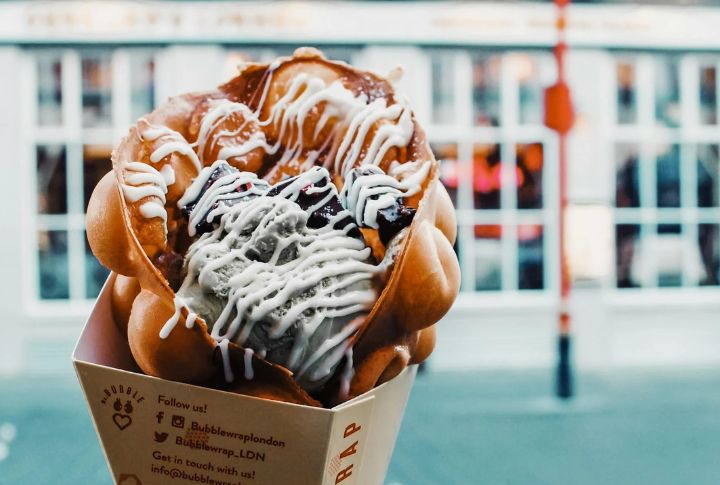
Some of the best food you’ll ever eat is found outside of a comfortable restaurant. It’s wrapped in paper and handed to you over a street cart. Locals know where the good stuff is, and they’ve been eating it long before maps started tagging food spots. Let’s follow their lead and wander through taste.
Tacos Al Pastor: Mexico
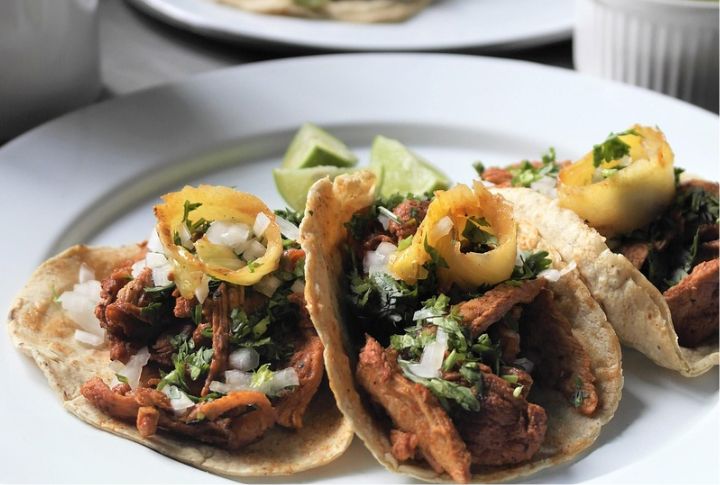
Tacos al pastor have their roots in Lebanese shawarma, which was brought to Mexico by Lebanese immigrants in the 1920s. They’re traditionally served with marinated pork on a corn tortilla with pineapple and other Mexican condiments that the locals love. You’ll find them on nearly every corner of Mexico City.
Yuca Frita: El Salvador

This golden-fried yuca (cassava) is a must-try in El Salvador. It is typically served with curtido (pickled cabbage) and salsa. Salvadorians often grab it along the streets of San Salvador or the beach towns. Ask for extra salsa or spice if you’re eating from a street stall!
Arepas De Huevo: Colombia

You’ll find these in the coastal regions of Colombia, where corn is the staple. Arepas de huevo are deep-fried and stuffed with a whole egg, served with a side of aji sauce. Vendors selling these golden delights to Colombians can be found on Cartagena’s streets. The spiciness depends on the aji you choose.
Pastel: Brazil
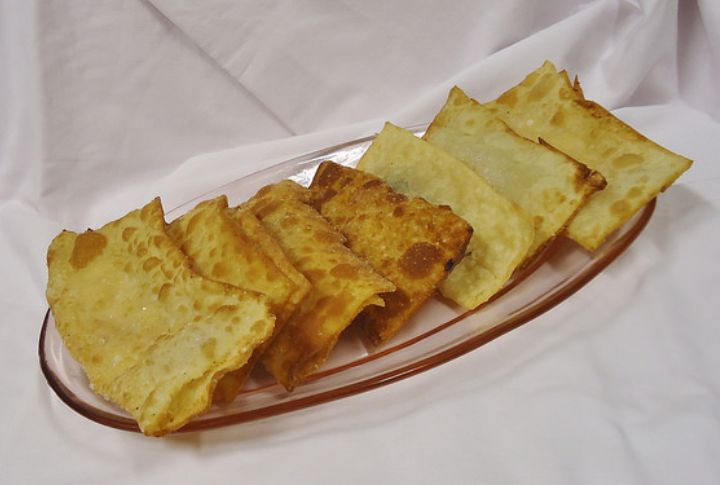
Pastel was inspired by the Japanese who migrated to Brazil in the early 20th century. Now, it is a local favorite. It’s a flaky pastry, deep-fried with fillings like cheese or beef. In Sao Paulo’s Mercado Municipal, pastel is sold in huge quantities. Keep an eye out for overstuffed pastels that can leak!
Bifana: Portugal
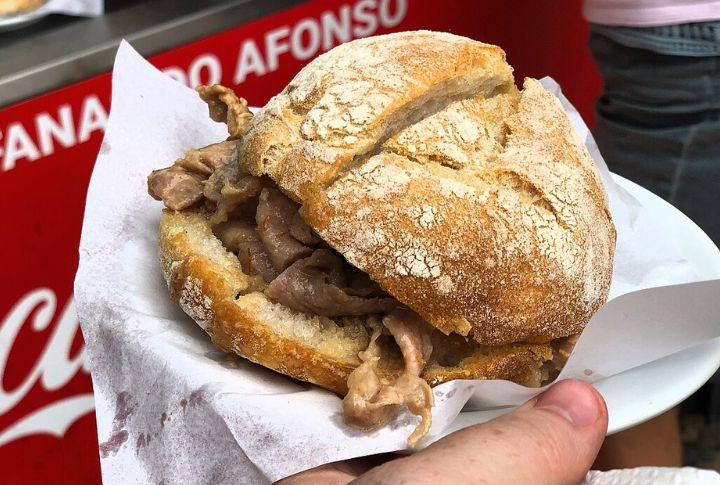
You’ll find bifanas in Portugal at nearly every street corner, especially in Lisbon’s Alfama district. This sandwich is filled with thinly sliced pork, marinated in white wine, garlic, and paprika. While its origins are debated, the Portuguese say it most likely appeared around the 16th century.
Currywurst: Germany
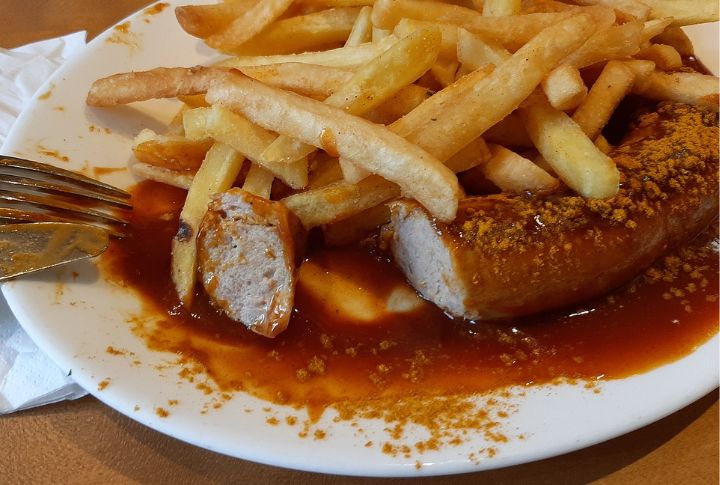
Legend has it that currywurst was invented in 1949 by Herta Heuwer in Berlin, who added curry powder to sausages. The dish has since become a symbol of post-war German street food. Street vendors along Kurfurstendamm still serve it with fries, and locals often enjoy it with mustard.
Simit: Turkey
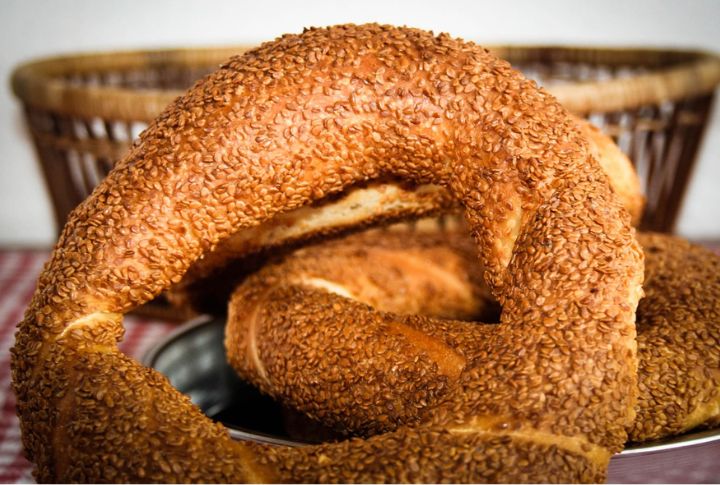
Simit is the Turkish take on a sesame-crusted bagel, usually sold by street vendors pushing carts in Istanbul. The crispy, golden exterior of the bread ring is recommended to be eaten with a sip of Turkish tea. Although mild in flavor, some vendors serve it with spicy cheese or olives.
Kebab Koobideh: Iran
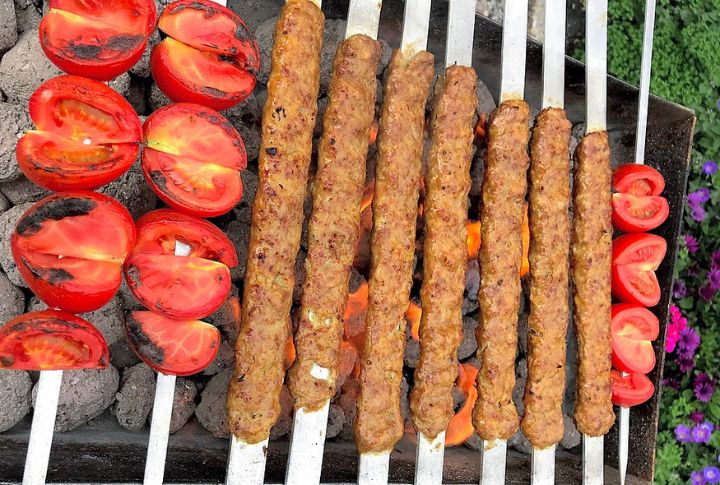
It is a traditional Iranian dish where minced meat, typically lamb or beef, is seasoned and grilled on skewers. In Tehran, kebab koobideh comes with saffron rice and grilled tomatoes. This dish has been part of Persian cuisine for centuries, and eating it fresh off the grill is important. Always ask for extra sumac!
Vada Pav: India
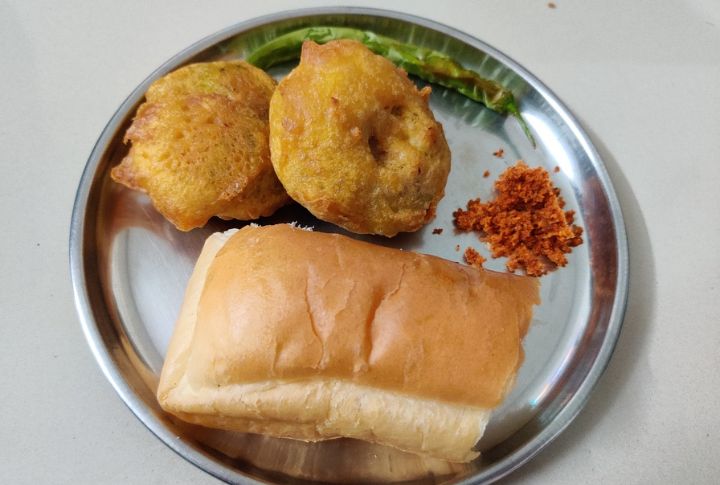
Vada pav is Mumbai’s iconic snack that locals sometimes call the “Indian burger.” A spicy potato fritter is placed into a pav (bread roll) and served with chutneys. Streets near Dadar Station are lined with vendors, and the spice level is high! Request extra chutney if you’re looking for a kick.
Sel Roti: Nepal

As a traditional Nepalese rice donut, Sel Roti is a festival favorite. It’s deep-fried, chewy, and slightly sweet, usually made during Dashain or Tihar. In Kathmandu’s Thamel district, it’s sold year-round at local markets. Locals say to beware of overcooked versions that can be hard and dry.
Som Tum: Thailand
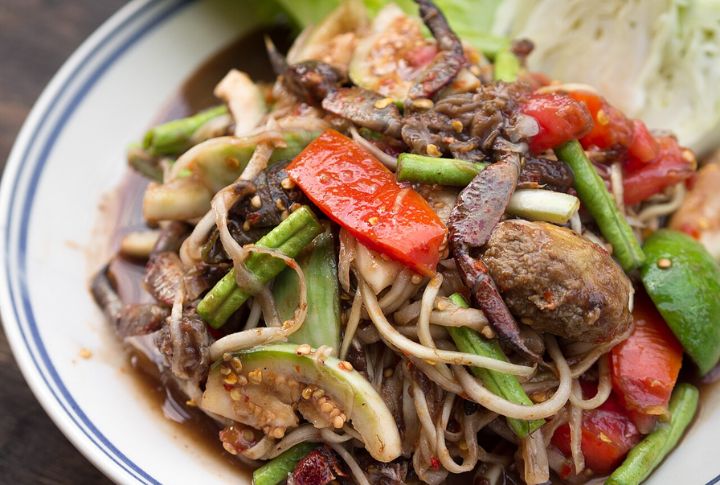
Green papaya is the feature here, becoming a spicy, tangy salad called Som Tum. It is an integral part of Thai street food culture, especially in the northeast. Typically served with sticky rice and grilled meats, it’s pounded fresh in a mortar and pestle in a rhythmic sound that locals identify.
Banh Mi: Vietnam
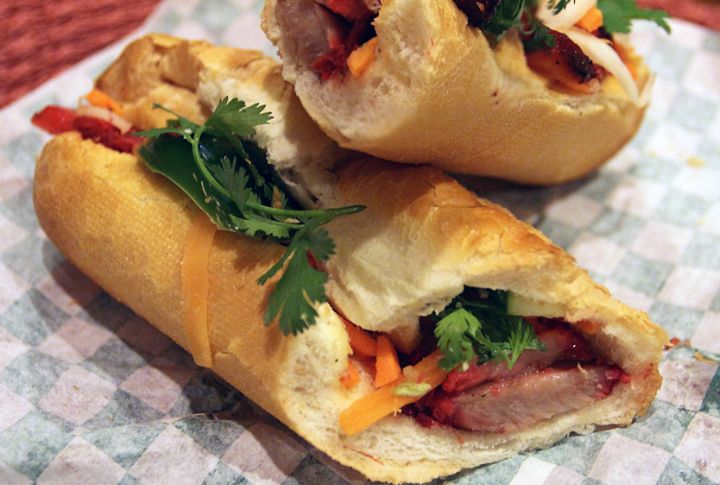
This Vietnamese sandwich has French roots, a leftover from the colonial era. Vietnamese people love this treat, which is a crispy baguette stuffed with pork and fresh ingredients. The best versions are found in Ho Chi Minh City, where street vendors prepare them fresh every morning.
Char Kway Teow: Malaysia
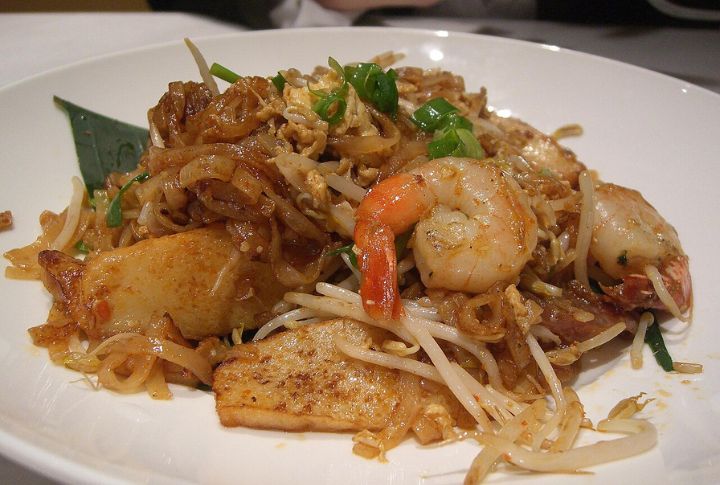
Flat rice noodles stir-fried with prawns and Chinese sausage with bean sprouts make up this iconic Malaysian street food. The smoky aroma comes from the high heat of the wok, often fried with lard. It’s a crowd favorite at Gurney Drive. Watch out for too much oil—it can sometimes overwhelm the dish.
Gado Gado: Indonesia
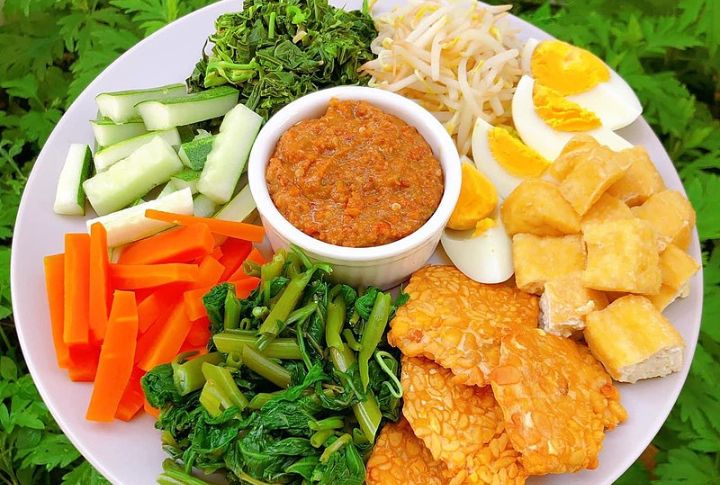
Boiled vegetables, tofu, tempeh, and rice cakes are smothered in a rich peanut sauce to give you Gado Gado. This is a true Indonesian classic found in local warungs, especially in Jakarta. Although seen as a salad, the Indonesians say it is hearty and can be spicy.
Kwek Kwek: Philippines
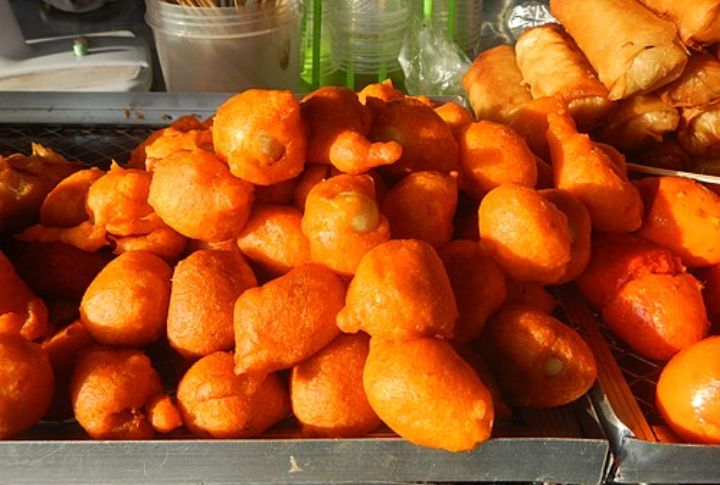
Quail eggs are deep-fried in bright orange batter to create this Filipino street snack. Sold at various stalls in Manila, its vibrant color catches your eye. However, don’t be surprised if the vinegar on top is stronger than expected—some vendors use it quite generously with a side of chili sauce.
Tteokbokki: South Korea

Drenched in a gochujang-based sauce, these chewy rice cakes have been a favorite in Seoul for decades. Historically, they were considered a royal snack, but now they’re found at nearly every corner. Myeongdong is known for its Tteokbokki stalls, where locals and tourists alike devour them hot.
Rou Jia Mo: China

Occasionally referred to as a “Chinese hamburger,” Rou Jia Mo consists of braised pork with condiments stuffed into a crispy flatbread. Originating from Xi’an, this dish is best enjoyed in the city’s bustling Muslim Quarter, where you can sample a variety of meats. Just be sure to grab a napkin; it can get messy!
Egg Waffles: Hong Kong

These bubble-shaped waffles are crispy on the outside and soft on the inside. A Hong Kong favorite originally sold as a warm snack on cold nights, they’re now found all over the city, particularly in the Mong Kok district. Vendors add sweet toppings like chocolate or even ice cream.
Takoyaki: Japan
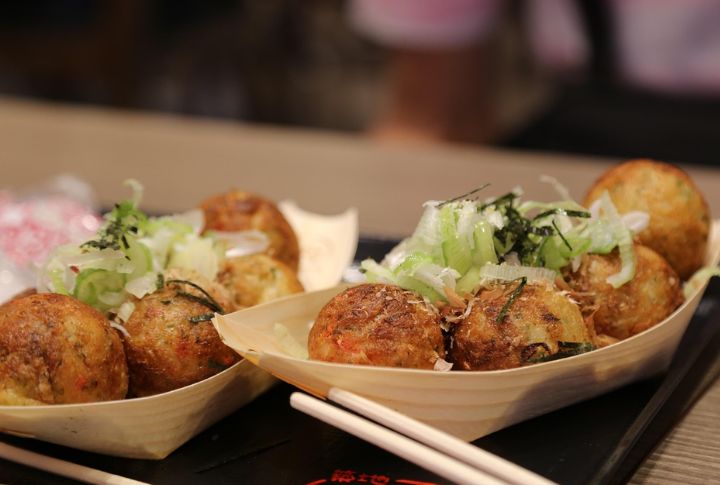
In Osaka, takoyaki is the ultimate snack. It’s made of dough filled with octopus and pickled ginger. The balls are fried until crispy, just on the outside, and remain soft inside. Dotonbori is the epicenter for takoyaki, where vendors serve it fresh off the grill. It’s best eaten while still steaming.
Gua Bao: Taiwan
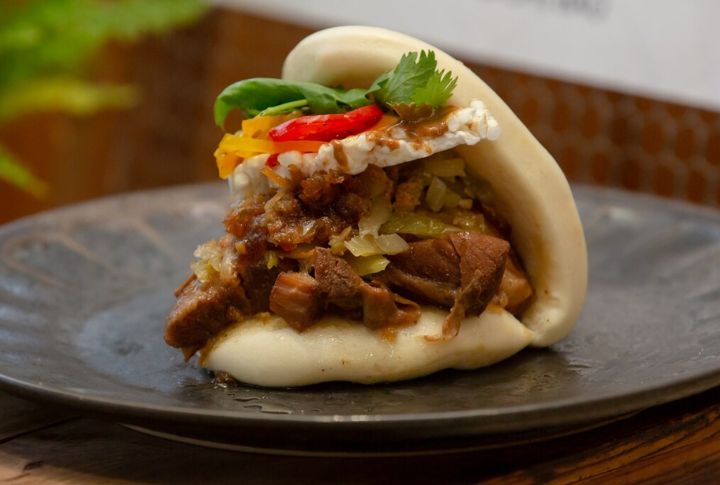
Think of it as Taiwan’s version of a sandwich—braised pork belly, pickled vegetables, and crushed peanuts stuffed into a fluffy steamed bun. It’s a staple at night markets like Shilin in Taipei. Gua Bao’s flavors are hard to beat, but don’t overload it—too much filling can overwhelm the soft bun.
Leave a comment